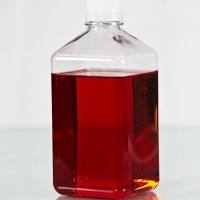Xenoantibodies and Complement Activity Determinations in Pig-to-Primate Xenotransplantation
互联网
1638
Based on the results from different studies, it is recommended to use multiple assays to fully monitor a peripheral antibody response in recipients of pig xenografts. In particular, the complement-dependent hemolytic assay (CH50) determines total endogenous complement activity; the cytolytic activity of anti-pig antibodies (APA) is also measured by hemolytic assay; an ELISA is used for quantification of anti-galactose α1,3galactose (Gal) IgG and IgM antibodies and flow cytometry for determining the antiendothelial cell (anti-EC) antibodies. The APA is recommended because this assay measures cytolytic antibodies unlike the other assays which are binding assays. The anti-Gal ELISA is especially useful as it specifically quantifies antibodies against the major xenoantigen in the pig-to-primate transplant combination. Thus, it provides different information than the APA assay and is particularly useful to follow up treatment modalities aimed at blocking/inhibiting the anti-Gal antibodies. Finally, the anti-EC assay measures IgG and/or IgM antibodies reactive to Gal and non-Gal antigens expressed on endothelial cells. This information is key for understanding the rejection process of vascularized xenografts and finding strategies to overcome rejection. Here, we describe in detail the procedures of these techniques.









